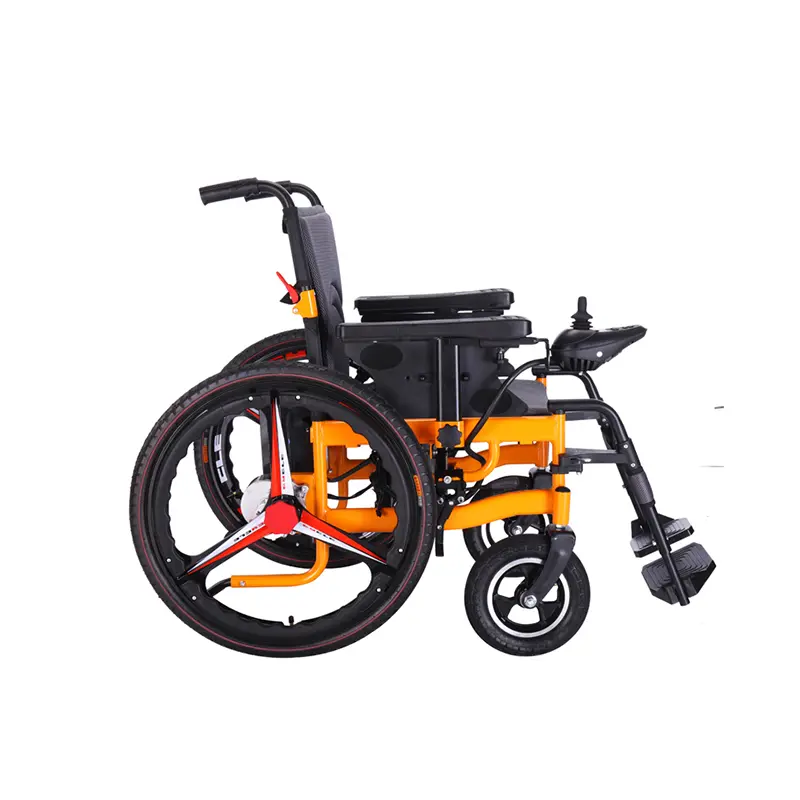Global safety standards for electric wheelchair tires: helping to ensure safe travel
In today’s society, electric wheelchairs have become an important means of travel for many people with limited mobility, and the safety of their tires is directly related to the user’s life safety and travel experience. With the integration of the global market, it is crucial for manufacturers, purchasers and end users to understand the global safety standards for electric wheelchair tires.
I. International standards: ISO 7176 series
(I) Overview of ISO 7176 series standards
The ISO 7176 series of standards is a comprehensive test standard for wheelchairs (including electric wheelchairs) issued by the International Organization for Standardization (ISO), covering a wide range of content from static stability to dynamic performance, from material safety to climate adaptability. These standards provide a comprehensive evaluation framework for the safety and performance of electric wheelchair tires, ensuring the reliability and safety of the product in various usage scenarios.
(II) Specific standards related to tires
ISO 7176-8:2014: This standard specifies the requirements and test methods for the static, impact and fatigue strength of wheelchairs. For electric wheelchair tires, this means that the tires need to show sufficient strength and durability under strict test conditions to cope with various impacts and long-term wear in daily use.
ISO 7176-9:2009: Involves climate testing of electric wheelchairs. As an important part of the wheelchair, the tire also needs to maintain stable performance under different climatic conditions (such as high temperature, low temperature, humidity, etc.) to ensure the safety of users in all kinds of weather.
ISO 7176-10:2008: Specifies the test method for the ability of electric wheelchairs to climb and descend obstacles. This requires the tires to have good grip and wear resistance to cope with complex road conditions, such as climbing slopes and crossing obstacles.
2. EU Standards: CE Certification
(I) The importance of CE Certification
In the EU market, electric wheelchair tires need to pass CE certification to prove that they meet the EU’s health, safety and environmental protection requirements. CE certification covers multiple aspects, including mechanical safety, electrical safety, material safety, etc. For tires, this means that they need to meet strict material standards to ensure that no harmful substances are released during use, while having good mechanical properties such as puncture resistance and wear resistance.
(II) Specific requirements
Mechanical safety: Tires need to have sufficient strength and toughness to cope with various mechanical shocks. For example, sharp objects or uneven roads may be encountered during driving, and tires need to be able to withstand these shocks without being damaged.
Material safety: The materials of tires need to comply with EU environmental and health standards and must not contain substances that are harmful to the human body. This not only protects the health of the user, but also meets the EU’s requirements for environmental protection.
Electrical safety: Although the tire itself does not involve the electrical system, in the overall design of the electric wheelchair, the performance of the tire needs to match the electrical system to ensure the safe operation of the entire device.
3. US standards: FDA and UL certification
(I) FDA certification
In the United States, electric wheelchair tires, as part of medical devices, need to be certified by the US Food and Drug Administration (FDA). The FDA has strict requirements for the safety and effectiveness of medical devices, which ensures the safety and reliability of electric wheelchair tires during use.
(II) UL certification
In addition to FDA certification, electric wheelchair tires also need to be certified by the Underwriters Laboratories (UL). UL certification focuses on the electrical safety and fire resistance of the product. Although the tire itself does not involve the electrical system, in the overall design of the electric wheelchair, the performance of the tire needs to match the electrical system to ensure the safe operation of the entire device.
4. Standards of other countries and regions
(I) Chinese standards
In China, electric wheelchair tires need to comply with the GB/T 18029 series of standards. These standards cover many aspects of wheelchairs, including size, quality, braking performance, etc. For tires, they need to meet relevant strength and wear resistance requirements to ensure safe use under various road conditions.
(II) Mexican standards
Mexico has clear requirements for the safety and performance of electric wheelchair tires, and certifies them according to the NOM-022-SCFI standard. This standard covers the overall safety and performance testing of electric wheelchairs to ensure the reliability and safety of the product during use.
5. How manufacturers ensure that tires meet global safety standards
(I) Strict quality control
Manufacturers need to establish a strict quality control system, from raw material procurement to production process to finished product inspection, every link needs to be strictly controlled. By adopting advanced production equipment and testing technology, ensure that the quality and performance of tires meet global safety standards.
(ii) Continuous R&D investment
As technology continues to advance, the technology of electric wheelchair tires is also constantly developing. Manufacturers need to continue to invest in R&D to develop safer, more durable and more environmentally friendly tire products. For example, the use of new materials and smart technologies such as pressure sensors and performance tracking can further improve the safety and user experience of tires.
(iii) Third-party testing and certification
In order to ensure that products meet global safety standards, manufacturers need to entrust third-party testing agencies to conduct rigorous testing and certification. By obtaining ISO, CE, FDA, UL and other certifications, manufacturers can prove the safety and reliability of their products to the global market.
Post time: Jul-14-2025


